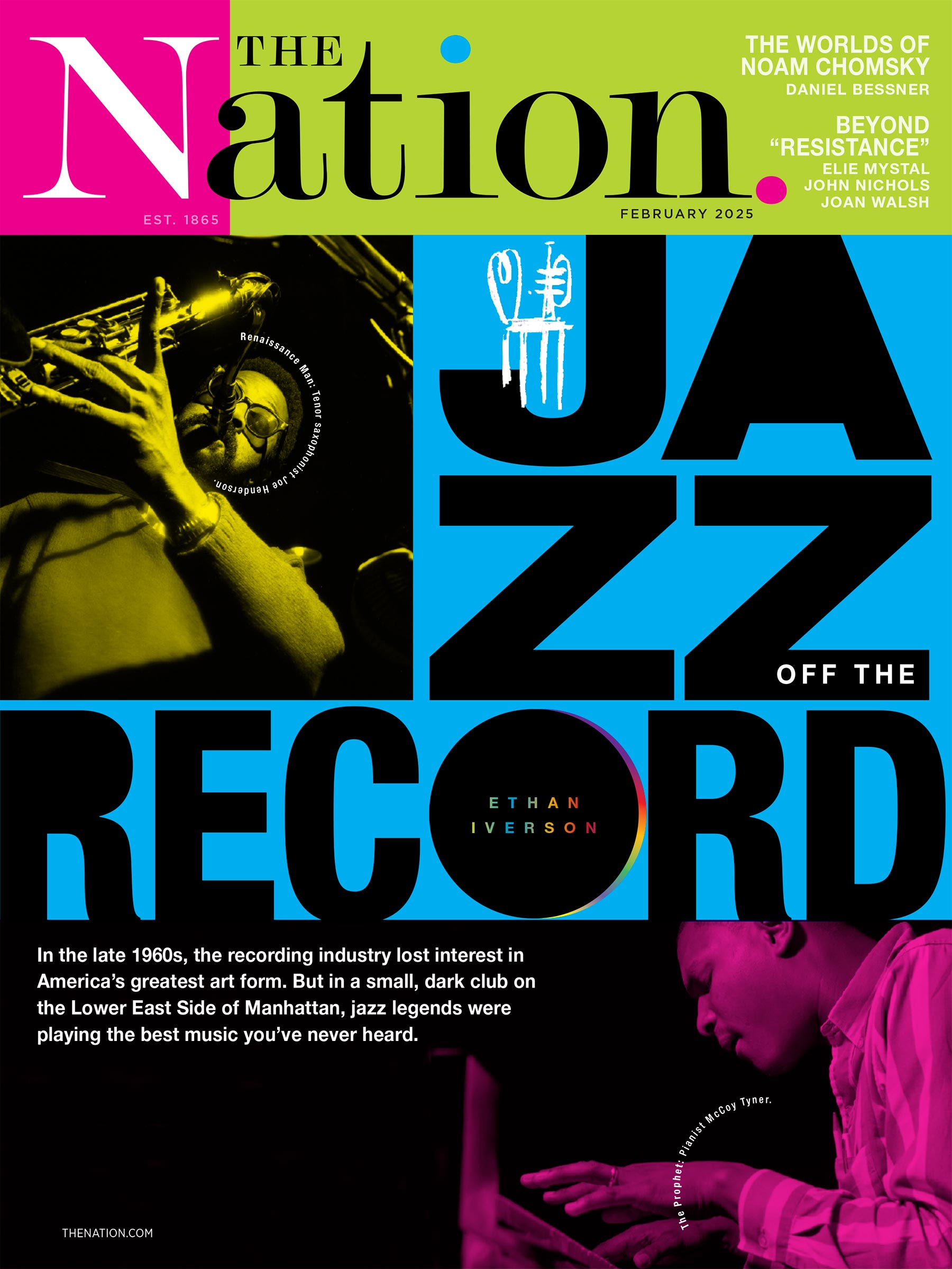Denise Levertov, who was home-schooled and never went to university, nevertheless received excellent training in how to write great poetry: as a teenager, she learned ballet. Among her peers, Frank O’Hara—a study in speed and lightness—was a balletomane; Robert Duncan, the mystic poet, frequently referred to Creation as “the dance.” Ezra Pound, too, instructed: “Music rots when it gets too far from the dance. Poetry atrophies when it gets too far from music.” Levertov, who championed the concept of “organic form” in the 1960s, could make words dance on the page, as in this angelic visitation in “Caedmon”: “The cows / munched or stirred or were still. I / was at home and lonely, / both in good measure. Until / the sudden angel affrighted me—light effacing / my feeble beam, / a forest of torches, feathers of flame, sparks upflying: / but the cows as before / were calm, and nothing was burning, / nothing but I.”
Exquisite vowel work was a hallmark of her poetry, as well as the perfectly pitched rhythm of alternately enjambed and end-stopped lines. Donna Krolik Hollenberg, author of the newest biography of Levertov, A Poet’s Revolution (California; $44.95), was her student at Tufts University in the late 1970s. She remembers “the erect posture of a ballet dancer” and this injunction: “‘Meeasure,’ she said, mischievously drawing out the vowel sounds in the first syllable, ‘it rhymes with pleeasure.’”
She was born Priscilla Denise Levertoff on October 24, 1923, in England, town of Ilford, county of Essex. Her mother, Beatrice, was descended from the Welsh Christian mystic Angell Jones of Mold; her father, Paul, descended from Rabbi Schneur Zalman, a founder of Chabad Hasidism. He converted and became an Anglican priest, settling in Great Britain with his wife—whom he met in Constantinople—pursuing work as a preacher and a scholar. Levertov’s heritage served as the ground of her poetry her whole life long (toward the end, she became a serious Catholic). Like another religious poet, Gerard Manley Hopkins, she thought all natural things had an intrinsic form, which Hollenberg traces to another of Levertov’s passions: she “learned essential compositional and design principles” from her drawing teacher, Miss Noar. “‘Pattern, pattern!’ she would adjure.” Levertov’s migration to the United States in 1948, and her discovery of William Carlos Williams’s poetry, transformed her from an acolyte of the British neoromantic “Apocalypse” school into a vanguard American poet, loosely associated with Robert Creeley and Robert Duncan, and published by New Directions.
Levertov’s dancing lines, her engagement with ideas and romantic-mystic sensibility—all this proves inspiring, but I was ambivalent about reading her biography. What to make of the personal foibles? We read details of her twenty-eight-year, not entirely satisfactory marriage to the writer and activist Mitch Goodman; her rocky relationship with her only son; her qualified success not only as wife and mother but also as sister and daughter. Does it do us any good to know she was prone to “outbursts of passionate anger” and that divorce in middle age would leave her unfulfilled, vulnerable to unrequited crushes on younger men, while her husband happily married one of his former students? The arc of excitement I felt starting this book declined into bleakness with the revelation of the older woman artist, secure in reputation but lonely, and chided for the very qualities that made her outstanding. After one quarrel, her childhood friend Betty Mitchell wrote her: “You frighten them, by your intelligence, your ‘scholarship,’ your enthusiasms, so strong people have to escape…. People can’t stand being told what to do, they can’t live up to your demands.”
Levertov did not refuse worldly commerce: she was an antiwar activist, a teacher and a poetry editor (most notably, of this magazine). Young poets will sense that there are some trade-offs. I’m more concerned that, in a time when all one’s self lies in one’s social identity, and political beliefs must all mesh like suits in a deck of cards, Levertov will seem hopelessly old-fashioned: concerned more with form than identity politics, and with ethical and spiritual content more than mere form. She loathed woman-only anthologies and accepted the early approbation of male mentors as her right; today, this might be considered “unexamined privilege.”
But Hollenberg is evenhanded, and she pays homage to the work. While aligning the poems and essays as best she can with the actual events of Levertov’s life, she rarely devolves into tedious exegesis or laundry lists. She can also make beautiful connections, such as between Levertov’s changing relationship to the word “revolution” and a late poem about her mother, “First Love,” in which the poet gazes at a convolvulus:
It looked at me, I looked
back, delight
filled me as if
I, not the flower,
were a flower and were brimful of rain.
And there was endlessness.
Perhaps through a lifetime what I’ve desired
has always been to return
to that endless giving and receiving, the wholeness
of that attention,
that once-in-a-lifetime
secret communion.
If the Latin root volvere (to turn) binds the two words, they are further bound to verse—from versus (a turn of the plow). Here, where the secret communion begins with the mother and child and ripples outward, reciprocity between the poet and the world—like dancing partners—is the very model of revolutionary awareness, on which everything turns.


